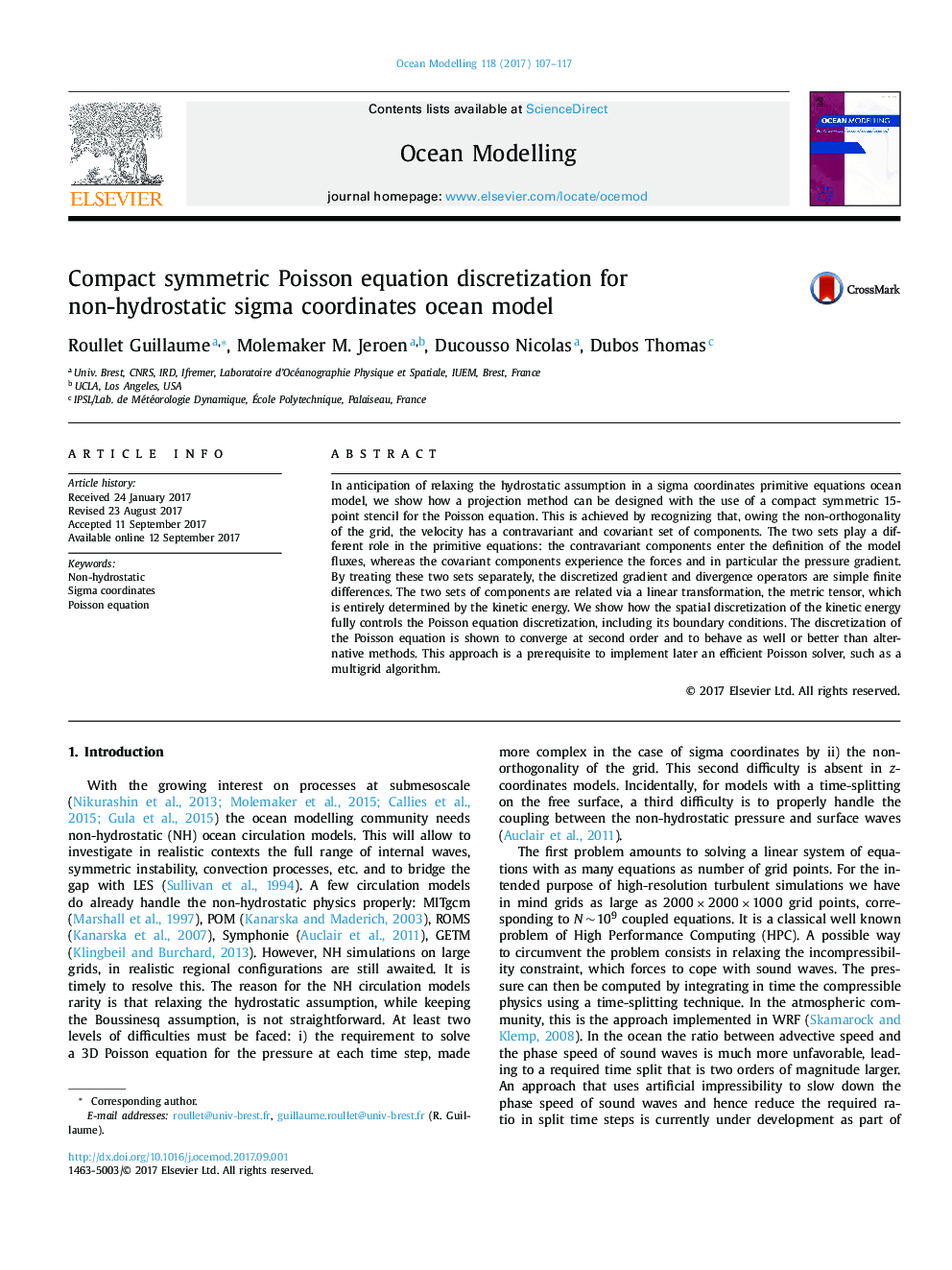| Article ID | Journal | Published Year | Pages | File Type |
|---|---|---|---|---|
| 5766404 | Ocean Modelling | 2017 | 11 Pages |
â¢A new formulation of the non-hydrostatic primitive equations in sigma coordinates is proposed.â¢Momentum and flux are two different objects related via a linear transformation.â¢The Poisson equation for pressure is discretized with a compact symmetric stencil.â¢The approach is a prerequisite to implement a fast Poisson solver for a forthcoming non-hydrostatic version of ROMS.
In anticipation of relaxing the hydrostatic assumption in a sigma coordinates primitive equations ocean model, we show how a projection method can be designed with the use of a compact symmetric 15-point stencil for the Poisson equation. This is achieved by recognizing that, owing the non-orthogonality of the grid, the velocity has a contravariant and covariant set of components. The two sets play a different role in the primitive equations: the contravariant components enter the definition of the model fluxes, whereas the covariant components experience the forces and in particular the pressure gradient. By treating these two sets separately, the discretized gradient and divergence operators are simple finite differences. The two sets of components are related via a linear transformation, the metric tensor, which is entirely determined by the kinetic energy. We show how the spatial discretization of the kinetic energy fully controls the Poisson equation discretization, including its boundary conditions. The discretization of the Poisson equation is shown to converge at second order and to behave as well or better than alternative methods. This approach is a prerequisite to implement later an efficient Poisson solver, such as a multigrid algorithm.
